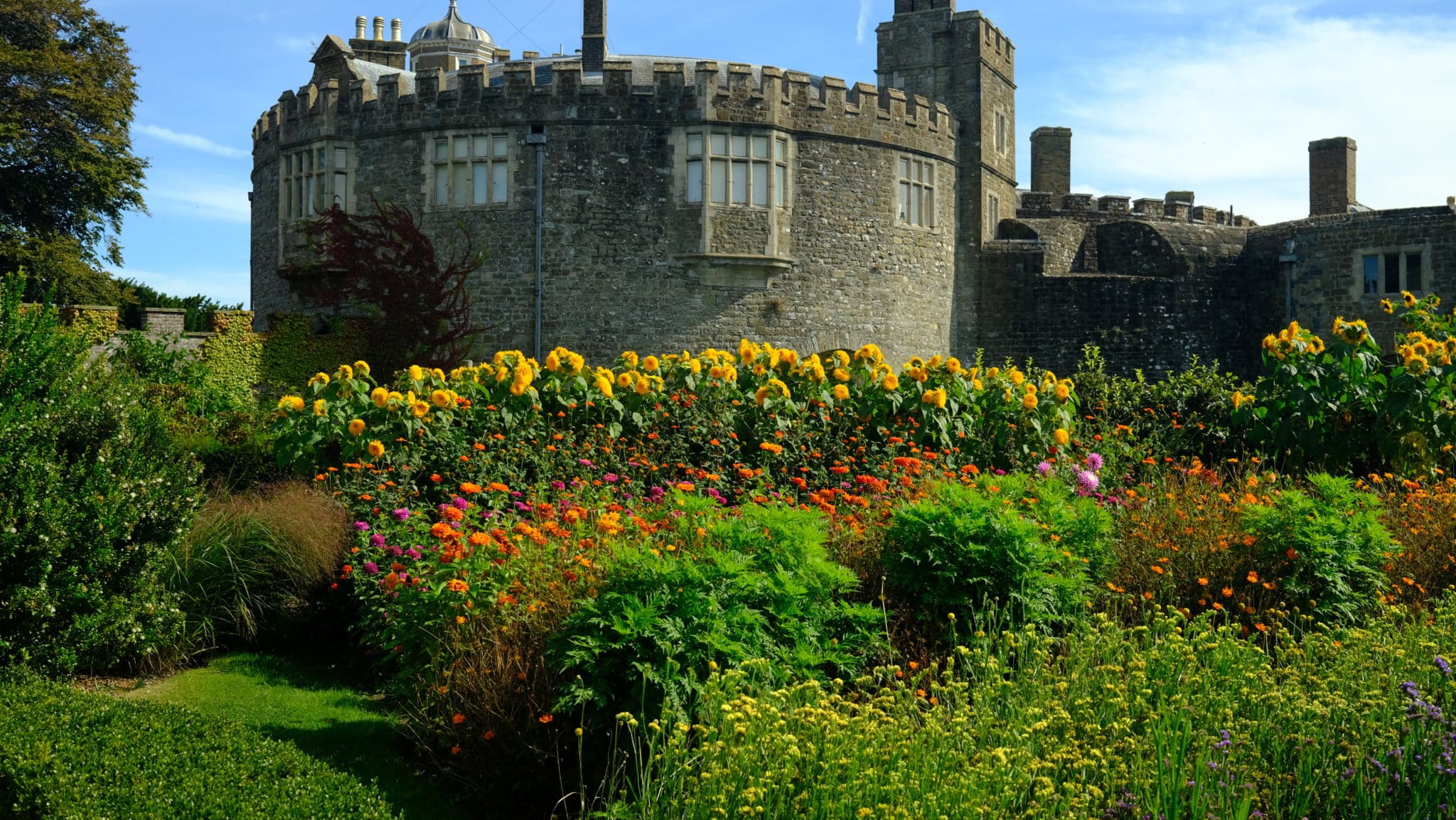In his column for October, Tim Sykes of Gardenproud takes a trip down to the coast to enjoy the gardens of Walmer Castle…
A short journey from Tunbridge Wells to Walmer near Deal in Kent reveals the wonders of Walmer Castle and the delightful gardens that surround it.
Walmer, is one of the three coastal forts in East Kent, created in 1539-40 by Henry VIII in expectation of an invasion.
An unusual design it was conceived to handle all round gunfire. Only once did Walmer have to cope with any serious attacks, in 1648, during the civil war.
From around 1720 the Lord Wardens who were responsible for defending the coast of Kent and Sussex used the castle as an official residence and built rooms with a sea view. Then later in the 18th Century the Prime Minister – William Pitt undertook further works to improve the castle’s residential capabilities. It was at this point that attention was directed to the gardens and Pitt oversaw the planting of the pleasure grounds.
Thereafter Lord Wardens were appointed from the elite of public life. In 1829 Walmer became the much-loved home of the Duke of Wellington, when he became a Lord Warden of the Cinque Ports. Other notable Lord Wardens include Sir Winston Churchill and Queen Elizabeth, the Queen Mother, who was Lord Warden from 1978 to 2002.
The gardens were improved by Pitt, but aspects predate this, in particular the Kitchen Garden whose origin stretches back to the early 1700s.
They are now carefully improved and maintained under the watchful eye of Philip Oostenbrink, the Head Gardener and his team.
The gardens are arranged into a number of distinct but joined areas.
You enter via an ornate gate into the Kitchen Gardens which are extensive, from these you can reach the Moat Garden via a gradual slope pathway. This is well worth a visit with its sheltered climate encouraging many interesting plants along the borders that camouflage the harsh walls of the castle. The Moat Garden is of particular interest to Philip Oostenbrink who is renovating the borders here. The trees and shrubs in these beds include some excellent specimens. I particularly enjoyed the fragrant white blooms from the giant Magnolia grandiflora, the wonderful fig trees that clung to the outer Moat walls, and the giant Canna lilies with their dramatic orange flower heads that sat mid border among giant tree ferns, bamboo and tropical palms. Elsewhere the deep pink blooms from Persicaria orientalis and the luminescent leaves of the Catalpa trees contrasted with the blue skies we were so lucky to enjoy on our visit.
Back in the Kitchen Garden there was a profusion of colour, with Asters, Dahlias and Zinnias dominating the cuttings garden area. The glass houses are 20th Century replacements for the original buildings and feature a number of palms, rare orchids and cacti that are a must-see. The Kitchen Garden is still a working garden providing fresh produce for the Castle tearooms and restaurant, which on our sampling was excellent.
Adjoining the Kitchen Garden is the very dramatic Broadwalk. This striking feature was created by the 2nd Earl Granville in the late 1860s. Originally conceived in a much more formal fashion, the Broadwalk is lined by two massive outer Yew hedge borders which now have billowing cloud-shaped form. In front of these are two wide herbaceous borders, planted in a more relaxed fashion, reminiscent of the colourful style of Gertrude Jekyll.
Here huge striking red Dahlias sit among Rudbeckia with Penstemons and Zebra Grass nearby. It all seems to work perfectly. At one end of the Broadwalk the eye is taken to a stunning ornate bench that contrasts perfectly with a yew hedge backdrop. Look in the other direction and the Broadwalk takes you on a journey through the Pleasure Gardens and beyond into the borrowed landscape and The Glen.
The Glen was once a chalk quarry now approached by a long set of stairs. Its thin alkaline soil has been transformed using shade-tolerant plants including Portuguese laurels, hollies, ferns, honeysuckle, and amelanchiers.
I was itching to see the gardens created for Queen Elizabeth, the Queen Mother. This was designed by Penelope Hobhouse in a modern formal style, with a large rectangular pool centrally situated and a classic stone summer house at its head. This sits opposite a yew arbor with arch openings that cleverly mimic the summer house proportions. Surrounding the pool are formal lawns with Yew monoliths carefully positioned. Providing the outer borders are herbaceous borders with softer planting siting among clipped hedges. These are punctuated by very distinctive Walmer benches inset at key points providing welcome viewing points for visitors.
It was a great day at Walmer, which I can thoroughly recommend. See more about the gardens at www.english-heritage.org.uk
For further advice and information to help you with your garden and its design contact
Tim Sykes at Gardenproud on 07725 173820.








